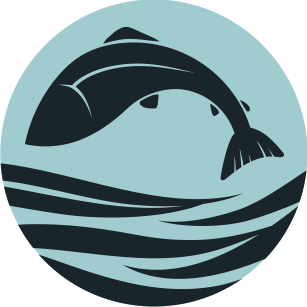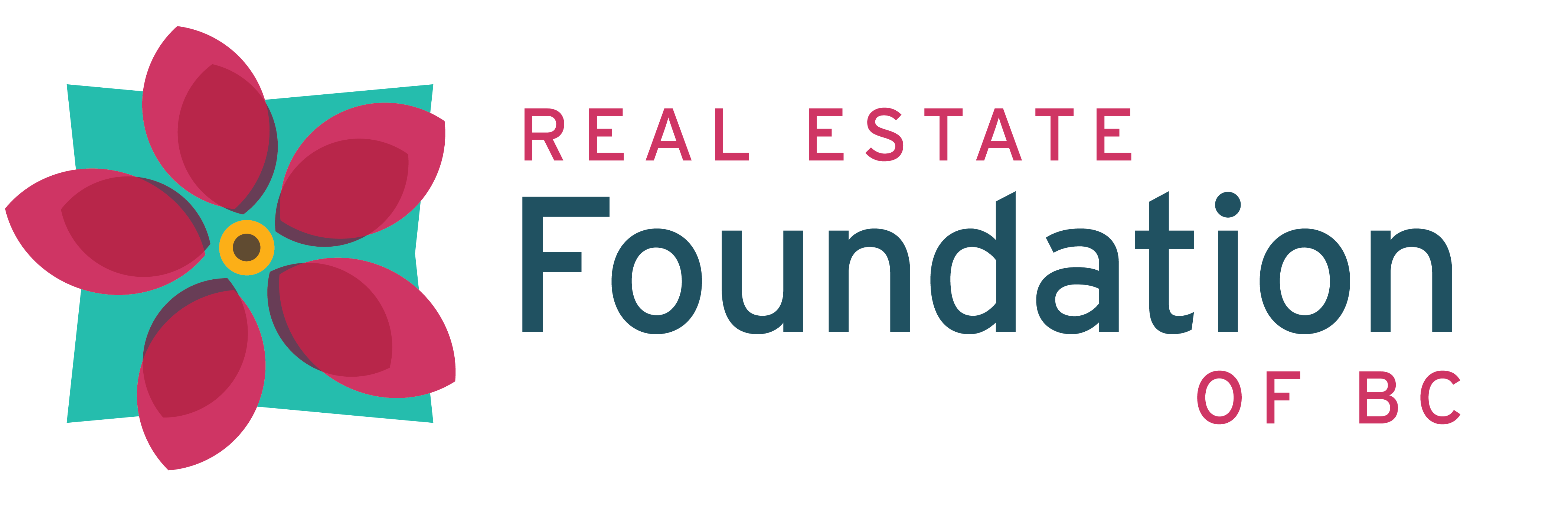Connecting Land and Water: Foodland Corridors
What happens on the land ends up in the water.
In the Fraser Valley, common agricultural practices like using fertilizers and clearing land can have big impacts on the watershed.
Melting snow and falling rain can wash fertilizers, pesticides, and animal waste into freshwater systems, which pollutes the water and harms salmon habitat. When trees and shrubs along the banks of a river or stream are removed to make way for grazing or crops, the land becomes more vulnerable to erosion and invasive species. Climate change can exacerbate these impacts. As temperatures rise, rainfall and snow melt become harder to predict and manage, putting additional pressure on changing freshwater ecosystems.
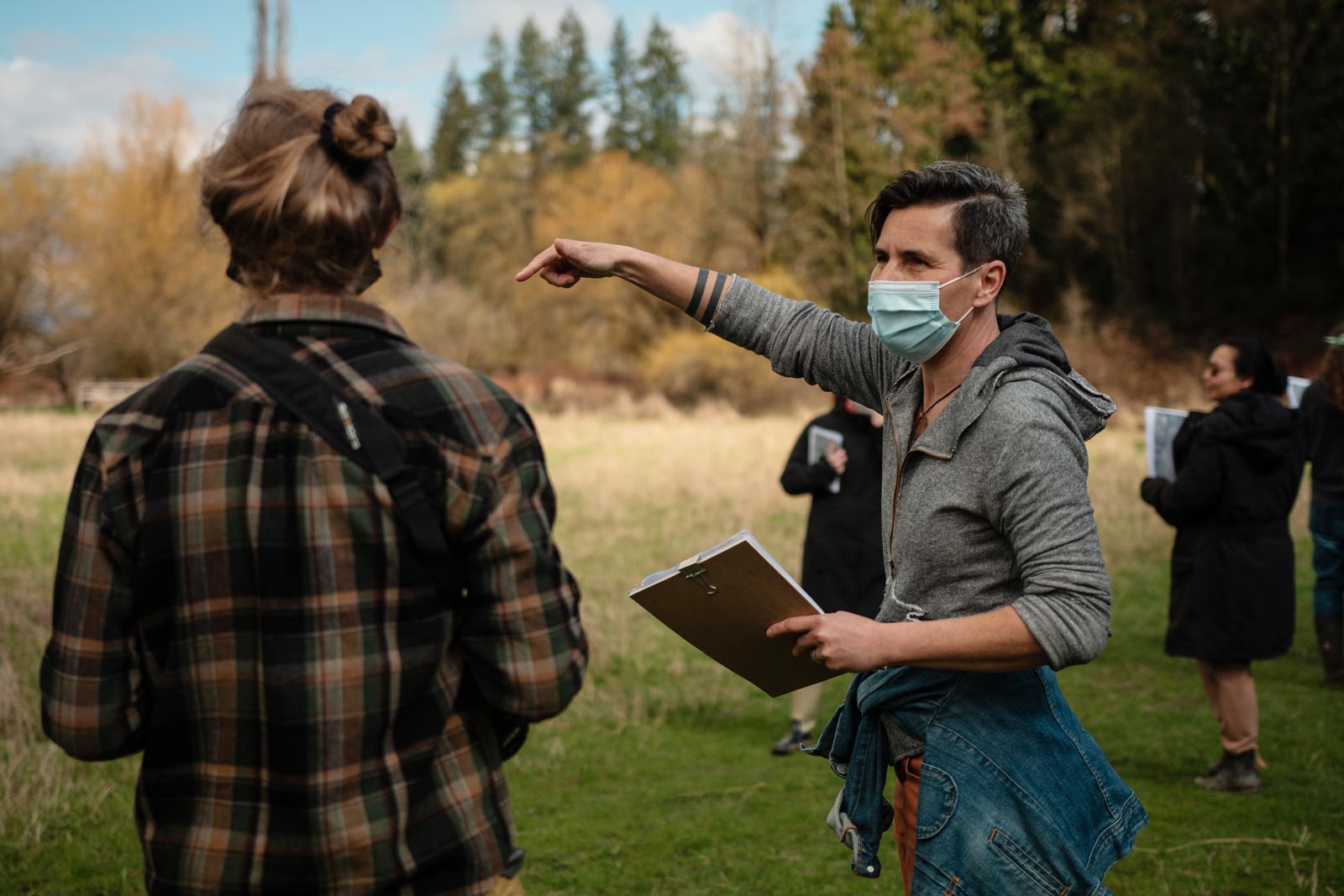
Lara Volgyesi leads a site visit ahead of foodland corridor restoration work along the sc̓e:ɬxʷəy̓əm (Salmon River), a tributary of the stal̕əw (Fraser River). (Photo: Nerv Productions)
Through the Foodlands Corridor Restoration Project (FCRP), the Rivershed Society of BC is bringing farmers, landowners, First Nations, and environmental groups together to test strategies for reducing these impacts in ways that benefit farmers, communities, and ecosystems.
As part of this project, the Rivershed Society is piloting the creation of a foodland corridor on the banks of the sc̓e:ɬxʷəy̓əm (Salmon River), a tributary of the stal̕əw̓[1] (Fraser River) that runs through the territories of the Kwantlen, Katzie, Semiahmoo, and Matsqui Nations – near the Township of Langley, BC.
A foodlands corridor is a contiguous swath of habitat that’s created by restoring and connecting adjacent parcels of privately-owned land. The term foodlands acknowledges the diversity of land-based food harvesting and includes both farming and harvesting (fishing, trapping, gathering) in natural areas.
Healthy food systems can be created by restoring foodlands to provide nutritious, sustainable, and culturally appropriate food for all community members.
On the pilot project site, Rivershed Society is collaborating with Seyem Qwantlen, the business subsidiary of Kwantlen First Nation, Langley Environmental Partners Society (LEPS), and local landowners to create off-channel wetted habitat to support Coho salmon over-wintering. These finger-like channels will run through both public (Crown) and privately-owned land.
“This pilot project is allowing us to build collaborative relationships with partners and use a holistic and practical hands-on approach to developing the foodlands restoration corridor concept,” says Lara Volgyesi, project lead with the Rivershed Society. “By combining Traditional Ecological Knowledge and western science to how we think about, and design, restoration efforts, we’re hoping at the end of this project we will have a fuller understanding of the strengths and challenges when using this approach.”
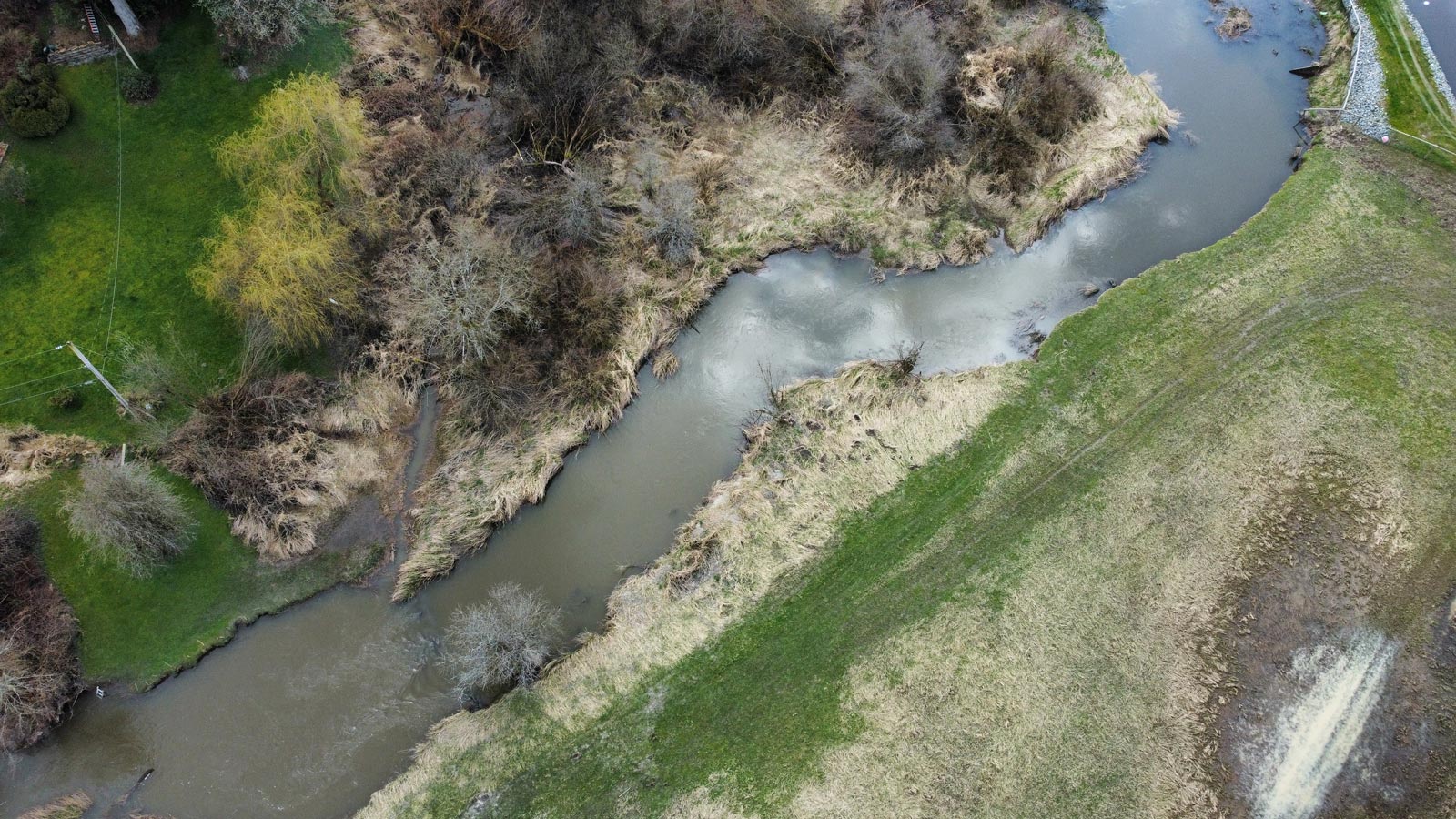
Riparian zones, which run between the shore and the upper banks of a river or stream, provide important habitat and help to control erosion. When these lands are healthy and connected through a corridor, they can support healthy, inclusive food systems. (Photo: Nerv Productions)
At the beginning of the project, LEPS conducted outreach to landowners along the Salmon River to help choose a site for the corridor.
After the pilot site was found, one landowner joined the project, and generously gave up some of their livestock grazing areas so that FCRP partners could restore habitat for salmon and other species at risk. The landowner is also willing to provide tools and materials towards the project.
Rivershed Society is working closely with Seyem Qwantlen to assess the site and plan restoration work. During the restoration, workers will plant live stakes and poles to stabilize the shoreline and prevent erosion, place large woody debris in the riverbank to create habitat, and add native plants to the edges of the river. Through Seyem Qwantlen, Kwantlen Elders and Kwantlen knowledge keepers and speakers are providing guidance on which plants to select and helping to harvest and propagate them for the site.
To carry out the assessment and restoration work, Rivershed Society and Seyem Qwantlen will employ 22 people.
“The Foodlands Corridor Restoration Project is an ethical space for engagement because it addresses our colonial history by bridging all parties towards common goals: relationship building and reconciliation ecological restoration, salmon recovery, and reconnecting people to the land and water - and the foods they provide - by different means of harvesting,” says Lara.
The implementation of this project comes at a time when the Government of BC is working to implement the United Nations Declaration on the Rights of Indigenous People Act, (UNDRIP) which “aims to create a path forward that respects the human rights of Indigenous peoples while introducing better transparency and predictability in the work we do together.”
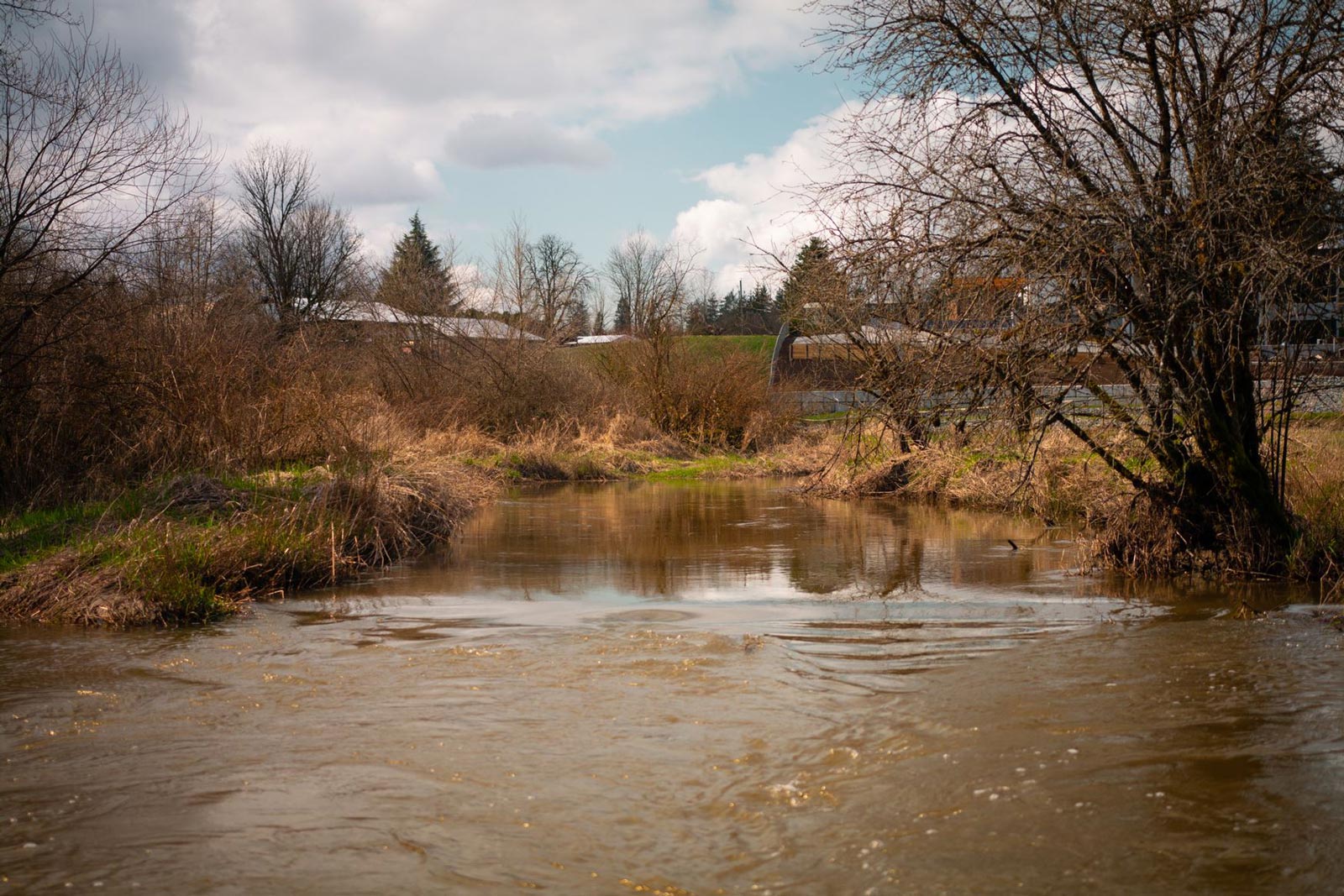
Agricultural practices like using fertilizer and clearing land for grazing can have impacts on watersheds. Rivershed Society of BC is working with farmers and members of Kwantelen First Nation to pilot land and water restoration strategies that benefit farmers, communities, and the ecosystems we depend on. (Photo: Nerv Productions)
By supporting shared learning, the FCRP aims to create cross-cultural understanding on the colonial history of agriculture in the watershed and on Indigenous food systems and land management. By bringing Indigenous and settler partners together, the FCRP addresses pressing environmental concerns (pollution, habitat loss) while also providing opportunities to support cultural awareness, visibility, and reconciliation - by honouring the value local Indigenous knowledge brings to foodlands corridor restoration work.
Once the pilot site on the sc̓e:ɬxʷəy̓əm (Salmon River) is complete, Rivershed Society has three adjacent landowners interested in partnering to expand the corridor. After this initial corridor, Rivershed hopes to find new landowner partners interested in bringing the corridor model to other parts of the watershed.
Rivershed Society of BC’s Foodlands Corridor Restoration Project is funded through the Healthy Watersheds Initiative. To learn more, visit rivershed.com.
Photos by Nerv Productions. Confirmed by Justine Nelson, ED Rivershed Society of BC on May 27, 2021
[1] Halq’eméylem hən̓q̓əmin̓əm̓ English name
Stó:lo stal̕əw̓ Big River (Fraser River)
